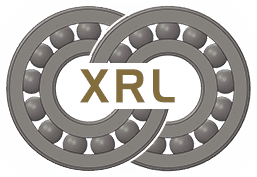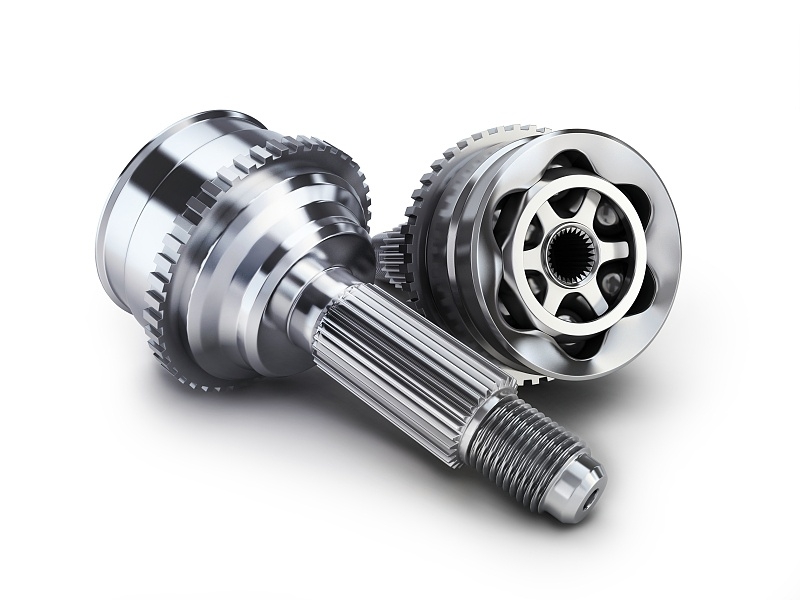A fixed bearing is a ring-shaped part of a thrust rolling bearing with one or several raceways. Fixed-end bearings use radial bearings that can withstand combined (radial and longitudinal) loads. These bearings include: deep groove ball bearings, double row or paired single row angular contact ball bearings, self-aligning ball bearings, spherical roller bearings, matched tapered roller bearings, NUP cylindrical roller bearings or those with HJ angular rings NJ type cylindrical roller bearings.
In addition: the bearing arrangement at the fixed end can include a combination of two bearings:
1. Radial bearings that can only bear radial loads, such as cylindrical roller bearings with one ring without ribs.
2. Provide axial positioning bearings, such as deep groove ball bearings, four-point contact ball bearings or two-way thrust bearings.
Bearings that are used for axial positioning must never be used for radial positioning, and usually have a small radial clearance when installed on the bearing seat.
There are two ways to adapt to the thermal displacement of the muddy bearing shaft. First, use a bearing that only bears radial loads and can allow axial displacement to occur inside the bearing. These bearings include CARE toroidal roller bearings, needle roller bearings and a cylindrical roller bearing with no ribs on the ring. Another method is to use a radial bearing with a small radial clearance when installed on the bearing seat so that the outer ring can move freely in the axial direction.
Positioning method of fixed bearing
1. Lock nut positioning method:
When installing the bearing inner ring with interference fit, usually one side of the inner ring is against the shoulder on the shaft, and the other side is usually fixed with a lock nut (KMT or KMT A series). Bearings with tapered holes are directly mounted on the tapered journal, usually fixed on the shaft with a lock nut.
2. Spacer positioning method:
It is convenient to use spacers or spacers between bearing rings or between bearing rings and adjacent parts: instead of integral shaft shoulders or bearing seat shoulders. In these cases, dimensional and shape tolerances also apply to related parts.
3. Positioning of stepped shaft sleeve:
Another method of bearing axial positioning is to use stepped bushings. These bushings are particularly suitable for precision bearing arrangements. Compared with threaded lock nuts, they have less runout and provide higher accuracy. Stepped bushings are usually used for ultra-high-speed spindles, for which traditional locking devices cannot provide sufficient accuracy.
4. Fixed end cap positioning method:
When installing the bearing outer ring with interference fit, usually one side of the outer ring is against the shoulder on the bearing seat, and the other side is fixed with a fixed end cover. The fixed end cover and its fixing screws have a negative impact on the shape and performance of the bearing in some cases. If the wall thickness between the bearing seat and the screw hole is too small, or the screw is tightened too tightly, the outer ring raceway may be deformed. The lighter ISO size series 19 series are more susceptible to this type of damage than the 10 series or heavier series.
Installation steps of fixed bearing
1. Before installing the bearing on the shaft, you must first take a picture of the fixing pin that fixes the bearing jacket, and at the same time polish the surface of the journal smoothly and clean, and apply oil to the journal to prevent rust and lubricate (allow the bearing to rotate slightly on the shaft) .
2. Apply lubricating oil on the mating surface of the bearing seat and the bearing: Put the double-row tapered roller bearing into the bearing seat, then put the assembled bearing and the bearing seat on the shaft together, and push it into the required position for installation.
3. Do not tighten the bolts that fix the bearing seat, and make the bearing housing rotate in the bearing seat. Also install the bearing and seat on the other end of the same shaft, rotate the shaft a few times, and let the fixed bearing automatically find its position. Then tighten the bearing seat bolts.
4. Install eccentric sleeve. First put the eccentric sleeve on the eccentric step of the inner sleeve of the bearing, and tighten it by hand in the direction of rotation of the shaft, and then insert the small iron rod into or against the counterbore on the eccentric sleeve. Hit the small iron rod in the direction of rotation of the shaft. Iron rods to make the eccentric sleeve installed firmly, and then tighten the hexagon socket screws on the eccentric sleeve.
Factors affecting bearing quality
1. At the same time of structural design and advanced, there will be a longer bearing life. Bearing manufacturing will go through multiple processes of forging, heat treatment, turning, grinding and assembly. The rationality, advancement and stability of the treatment will also affect the service life of the bearing. The bearing’s heat treatment and grinding process are affected, and the product quality is often more directly related to the failure of the bearing. In recent years, studies on the deterioration of the bearing surface layer have shown that the grinding process is closely related to the bearing surface quality.
2. The influence of the metallurgical quality of the bearing material is the main factor in the early failure of the rolling bearing. With the progress of metallurgical technology (such as bearing steel, vacuum degassing, etc.), the quality of raw materials has been improved. The proportion of raw material quality factors in bearing failure analysis has dropped significantly, but it is still one of the main factors of bearing failure. Whether the selection is appropriate is still a bearing failure analysis that must be considered.
3. After the bearing is installed, in order to check whether the installation is correct, it is necessary to carry out a running check. Small machines can be rotated by hand to confirm whether they rotate smoothly. The inspection items include improper operation due to foreign matter, scars, indentation, unstable torque due to poor installation and poor processing of the mounting seat, excessive torque due to too small clearance, installation error, and seal friction, etc. Wait. If there is no abnormality, it can be moved to start power operation.
If the bearing has a serious failure due to some reason, the bearing should be removed to find out the cause of the heating; if the bearing is heated with noise, it may be that the bearing cover is rubbing against the shaft or the lubrication is dry. In addition, the outer ring of the bearing can be shaken by hand to make it rotate. If there is no looseness and the rotation is smooth, the bearing is good; if there is looseness or astringency during rotation, it indicates that the bearing is defective. At this time, you should further analyze and check the account. Reason to determine whether the bearing can be used.
Post time: Apr-19-2021


